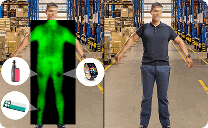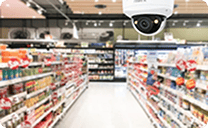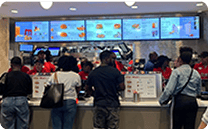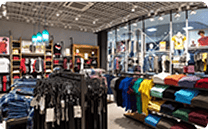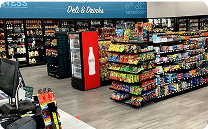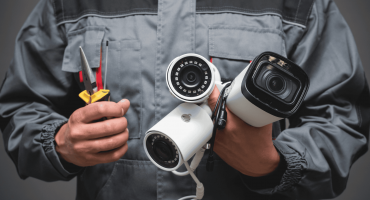In This article
Introduction
Self-checkout systems have transformed various segments of the retail industry, offering significant financial benefits, including lower labor costs and increased efficiencies for retailers. They also promise shorter wait times and more convenience for customers. However, these benefits have a growing dark side: self-checkout theft. The growth of self-scan theft poses significant financial, operational, and reputational risks to businesses of all sizes and types. Decision-makers at retailers who use or are considering self-checkout systems must understand how to prevent self-checkout theft and take proactive measures to mitigate it.
Understanding Self-Checkout Theft
Retail theft at self-checkout is exactly what it sounds like – intentional deceit, exploitation, or manipulation of self-service checkout systems by customers to avoid payment for goods. Traditional shoplifting typically involves concealing and removing items without paying for them. This type of theft often succeeds by exploiting technological loopholes, a lack of direct, real-time human supervision, or both.
Research indicates that self-checkout stealing incidents increase by as much as 65% compared with traditional checkouts with human cashiers. Beyond financial losses, successful self-checkout thefts can result in inventory discrepancies, skewed sales data, and increased security costs. If poorly implemented, defenses against self-checkout theft can also annoy and upset customers, eroding a retailer’s reputation and its customers’ trust.
Common Tactics Used in Self-Checkout Theft
Thieves use multiple self-checkout scams to try to beat self-checkout theft prevention systems. Here are some of the most popular.
- Barcode Switching: A customer replaces the barcode of a higher-priced item with a code from a less expensive item. The scan is successful, but the amount is wrong, resulting in a loss on each item so acquired.
- Item Skipping: Perpetrators simply place items in the bagging area without scanning them. This method is particularly effective when no humans are monitoring the self-checkout area or inspecting shoppers’ bags as they exit the store.
- Weighing Manipulation: A customer obtains a more-expensive organic produce item for less than its true price by simply entering the code for the non-organic version into the system. Or weighs one item but bags two or more. Either way, it results in a successful self-checkout theft.
- Receipt Fraud: A thief arrives at the store with old, legitimate receipts in their pocket. They then obtain their desired items and show the old receipts as justification for the new “purchase.” Even when humans are checking receipts, they can be too busy or distracted to notice a past date on a receipt, if it shows any date information at all.
Why Self-Checkout Theft Happens
A simple answer to this question is that it is a relatively easy crime to commit successfully, even for inexperienced thieves. More specifically, three factors contribute significantly to the prevalence of self-checkout and theft:
- Lack of staff supervision and enforcement. One reason to implement self-checkout systems is to reduce labor requirements and costs. However, the reduced presence of staff in checkout areas can also persuade individuals considering theft that they face a low risk of being caught.
- Exploitation of technological loopholes. Self-checkout systems may have inadequate features for weight verification or flagging barcode scanning inconsistencies. These inadequacies present opportunities for observant and agile thieves.
- Customer frustration. Otherwise, honest shoppers, frustrated by technology malfunctions or long wait times, sometimes respond by committing self-serve checkout theft. They perceive such actions as compensation for their inconvenience.
Preventative Measures for Self-Checkout Theft
What can a retailer do to combat self-checkout theft successfully? Retailers can take several steps to reduce or even eliminate theft.
- More and better surveillance. AI-powered cameras and intelligent monitoring systems can detect suspicious behaviors in real-time, enabling retail security teams to intervene immediately.
- Automated weight and barcode verification. Automated systems can cross-verify scanned items with their weight. This process can help to detect and flag discrepancies that may indicate theft at self-checkout.
- Assistance from trained staff. Training staff members to handle actual or suspected self-checkout theft and positioning them in or near self-checkout areas ensures that customers get help when they need it. Those employees can help customers resolve technical issues quickly and identify and deter potential thieves.
- Encouraging customer awareness and support. Signs, newsletters, in-store announcements, and even advertising copy can help educate customers about the consequences and costs of theft. Such efforts can deter potential thieves and persuade customers to help retailers curtail such thefts. Campaigns such as “If you see something, say something” have helped to reduce other types of crime and can easily support efforts to curb self-checkout theft.
Balancing Security and Customer Experience
Efforts to reduce and prevent retail theft must always be balanced to provide consistently positive customer experiences. Retail security solutions for self-checkout are invaluable for retailers who employ unobtrusive surveillance methods, such as AI-driven monitoring, to achieve and maintain that balance. These measures help reduce theft from self-checkouts and enhance security without making honest customers feel uncomfortably scrutinized or presumed to be possible thieves. Occasional random security checks can also deter theft without creating an atmosphere of distrust among honest customers.
Conclusion
Addressing self-checkout fraud effectively is essential for protecting retailer revenue and customer trust. Retailers can mitigate the risks and preserve the benefits of self-checkout systems by understanding how self-checkout thieves operate and implementing comprehensive, minimally obtrusive preventative measures. Striking the right balance between security and customer experience ensures that technological advancements, such as self-checkout systems, continue to enhance the retail experience for both retailers and customers. Learn how DTiQ improves the in-store customer experience.
